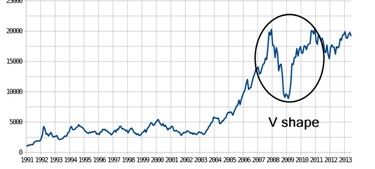Indian Economy
Drop in FPI Outflows
- 04 May 2020
- 6 min read
Why in News
According to recent data from Central Depository Services Limited (CDSL), the Foreign Portfolio Investors (FPIs) have significantly reduced the pace of outflows from the equity and debt market in April, 2020, after a record net outflow of Rs 1,18,203 crore in March 2020.
Key Points
- FPIs sold a net of Rs 6,883 crore from the equities market and net holdings worth Rs 12,551 crore from the debt market in April.
- In equity market shares are issued and traded, either through exchanges or over-the-counter markets (i.e directly). It is also known as the stock market.
- The debt market is the market where debt instruments are traded.
- Debt instruments are instruments that require a fixed payment to the holder, usually with interest. E.g. bonds (government or corporate) and mortgages.
- However, they invested a net of Rs 4,032 crore in debt Voluntary Retention Route (VRR) scheme.
- VRR scheme allows FPIs to participate in repo transactions and also invest in exchange traded funds that invest in debt instruments.
- Outflows have continued due to uncertainty surrounding economic conditions caused by Covid-19 lockdown and investors are cautious. However, the pessimism also continues to grip the markets.
- So far, India has been able to contain the Covid-19 pandemic from spreading aggressively. The measures announced by the government and the Reserve Bank of India (RBI) periodically to revitalize the sagging economy have also resonated well with investors.
- With selective relaxation in the lockdown and gradual opening up of economic activity in the country, foreign investors will be closely watching the developments on this front.
- A success on developing medicine and vaccines will lead to a V-shaped recovery in the economy and markets.
Voluntary Retention Route (VRR) scheme
- The VRR scheme is aimed at attracting long-term and stable FPI investments into debt markets.
- Investments through the route will be free of the regulatory norms applicable to FPI investments in debt markets, provided investors maintain a minimum share of their investments for a fixed period.
- VRR Scheme has a minimum retention period of three years and investors need to maintain a minimum of 75% of their investments in India.
- FPIs registered with Securities and Exchange Board of India (SEBI) are eligible to voluntarily invest through the route in government and corporate bonds.
V-Shaped Recovery
- A V-shaped recovery is characterized by a sharp economic decline followed by a quick and sustained recovery.
- The recession of 1953 is an example of a V-shaped recovery.
- A V-shaped recovery is different from an L-shaped recovery, in which the economy stays in a slump for a prolonged period of time.
Foreign Portfolio Investment
- Foreign portfolio investment (FPI) consists of securities and other financial assets passively held by foreign investors.
- It does not provide the investor with direct ownership of financial assets and is relatively liquid depending on the volatility of the market.
- Foreign portfolio investment is part of a country’s capital account and is shown on its Balance of Payments (BOP).
- The BOP measures the amount of money flowing from one country to other countries over one monetary year.
- The investor does not actively manage the investments through FPIs, he does not have control over the securities or the business.
- The investor’s goal is to create a quick return on his money.
- FPI is more liquid and less risky than Foreign Direct Investment (FDI).
- A Foreign Direct Investment (FDI) is an investment made by a firm or individual in one country into business interests located in another country. FDI lets an investor purchase a direct business interest in a foreign country.
- FPI is often referred to as “hot money” because of its tendency to flee at the first signs of trouble in an economy.
- FPI and FDI are both important sources of funding for most economies. Foreign capital can be used to develop infrastructure, set up manufacturing facilities and service hubs, and invest in other productive assets such as machinery and equipment, which contributes to economic growth and stimulates employment.






-min.jpg)